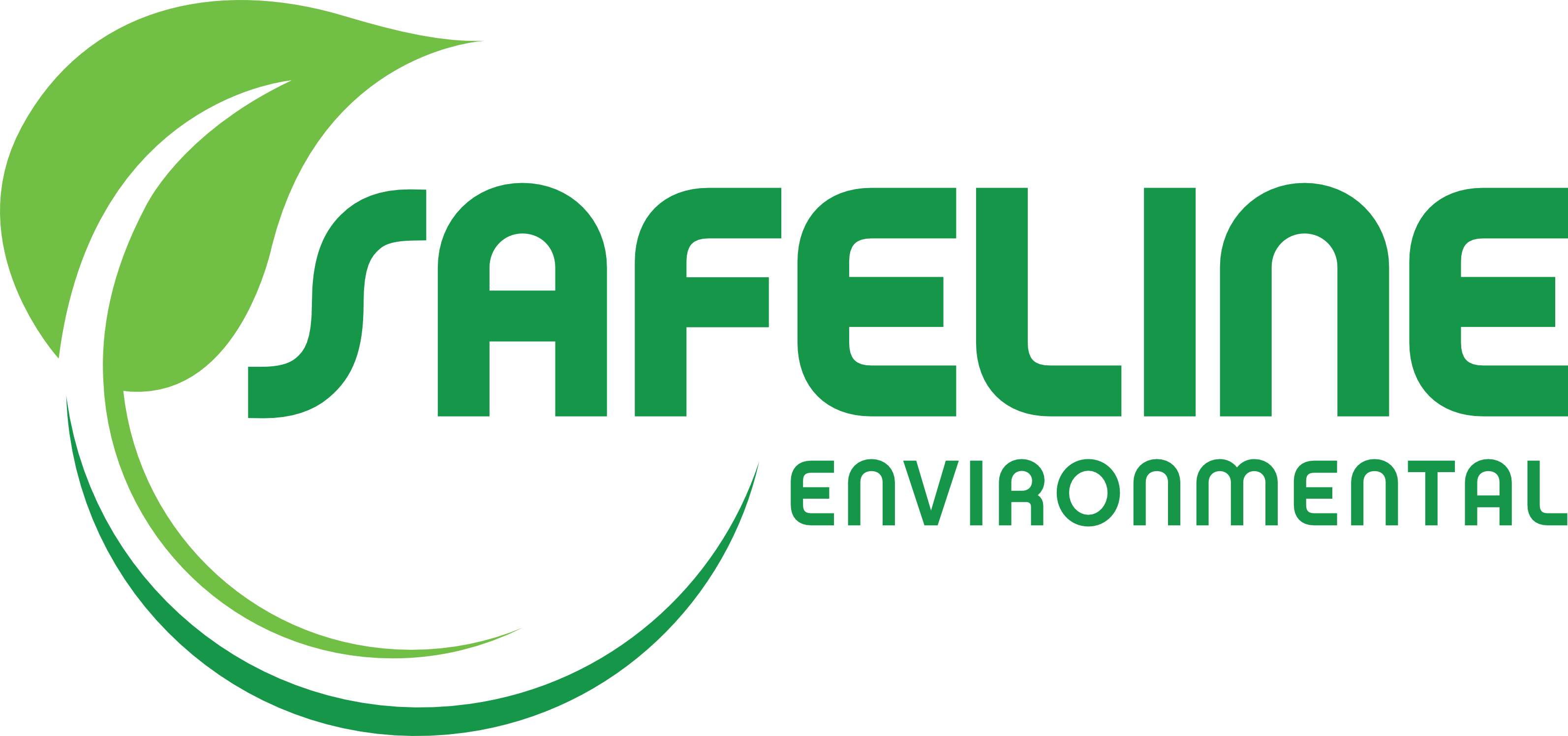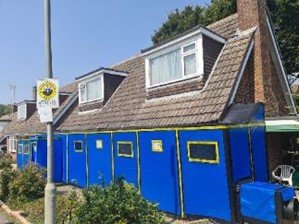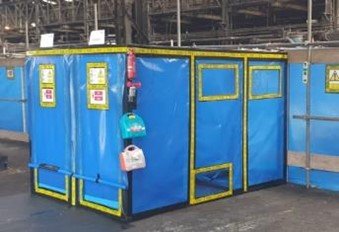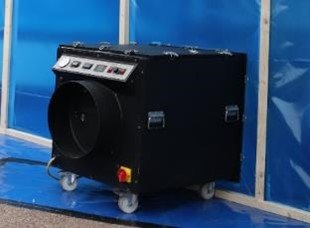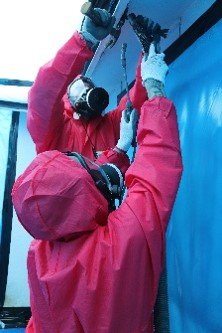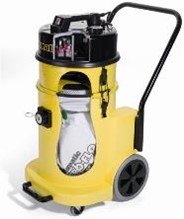SAFELINE ENVIRONMENTAL LTD
ASBESTOS SERVICES AROUND THE UK
The need for asbestos services including surveys and removal can be a stressful time for prospective clients, as most people do not know what is entailed in the process. Safeline Environmental work with both domestic clients and large corporate organisations. Whether your project is an asbestos cement garden shed or an industrial boiler room, you will receive the same professional treatment by our in-house team of project managers and a directly employed workforce. Their primary focus is to provide our asbestos removal service to the highest standards possible with the minimum of stress.
Safeline Environmental holds a full 3-year asbestos removal license issued by the Health and Safety Executive (HSE). This is the maximum license period and is only available to companies that can demonstrate excellence in all aspects of health and safety. In addition, we hold a hazardous waste carriers license issued by the Environment Agency and operate our own permitted hazardous waste transfer station. Our asbestos removal service ensures that all regulations are fully adhered to and have supplemented the regulatory guidance with our own standard operating procedures which are accredited by Lloyds Register to ISO 9001, 14001, and 45001. To provide total peace of mind we hold £10 million for Employers and £20 million for Public Liability Insurance.
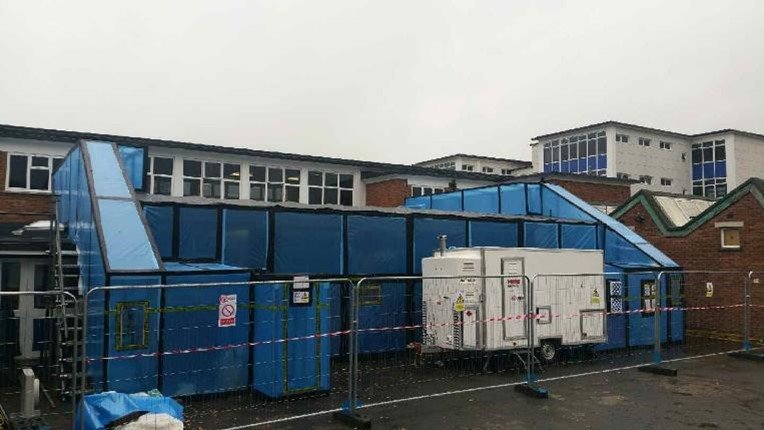
THE DANGERS OF ASBESTOS
Anyone who suspects that asbestos may be present in a building they live or work in needs to act as quickly as possible. Asbestos is an extremely hazardous material that, if damaged or disturbed, releases fibres that are small enough to be inhaled. Once in the lungs, these fibres can cause serious illnesses such as asbestosis, mesothelioma and lung cancer. Every week in the UK 20 tradespeople die because they were exposed to asbestos in the past. In addition, 5000 or so individuals in the UK are killed by asbestos each year, significantly outnumbering those killed in road traffic accidents. Asbestos was added to over 3000 building materials and any building which was completed or refurbished before the year 2000 could contain asbestos. Therefore, to prevent exposure it is essential that all asbestos-containing materials are either managed, repaired or removed.
In the UK only 3 of these minerals were used commercially
These were:
Chrysotile (white), Amosite (Brown), Crocidolite (Blue) Asbestos
They were used extensively in building / consumer products due to their properties of being:
Flexible
Strong
Heat (fire) resistance
Insulating
Not affected by exposure to chemicals
It is estimated that over a 100-year period from 1899 to 1999 over 6 million metric tonnes of asbestos were imported into the UK. This asbestos was added to around 3,000 distinct products with vary in asbestos content from 1 to 100% asbestos.
Asbestos is a form of fibrous rock that when damaged or disturbed produces a cloud of microscopic dust. Certain asbestos-containing materials can produce up to 20 million fibres in 1m3 of air when they are damaged or disturbed.
This dust is so small that it can be inhaled. Once inhaled a proportion of the fibres become lodged in the lungs. The human body is not evolved to break down asbestos fibres (rock) that are embedded in the lungs.
Unfortunately, inhaling these fibres can result in developing life-limiting diseases such as asbestosis (scarring of the lungs), mesothelioma (cancer of the lining of the lungs) and lung cancer (malignant lung tumours).
The diseases often take 20-40 years to become apparent and when they do treatment is often limited. The best way to avoid contracting asbestos-related diseases is to prevent being exposed to asbestos in the first place.
Safeline Environmental possess the knowledge, skills, and competence to carry out our asbestos removal services for all types of asbestos-containing materials (ACM)s from any building or site.
ASBESTOS SERVICE
Here at Safeline Environmental Ltd we know everything about
Asbestos and how to remove and dispose of it safely
Spray Coatings
Asbestos Thermal Insulation
Asbestos Insulating Board (AIB)
Friable asbestos debris
The above asbestos containing materials (ACMS) present a high risk of releasing asbestos fibres due to their low density in excess of the control limit of 0.1f/ml over a TWA 4 hr period. This means that the asbestos fibres are easily released when disturbed. Removing these ACM’s requires a license issued by the Health and Safety Executive (HSE).
When undertaking removal of products requiring a HSE asbestos removal license the following process should be followed:

Site Visit - A site visit should be carried out to define the scope of works and carry out a risk assessment.
Quotation - A quotation is submitted to the client for approval defining the extent of works.
Method Statement / Risk Assessment - Once app
roved a detailed method statement and risk assessment is prepared detailing how the works will be carried out in a manner that prevents the spread of and exposure to asbestos.
ASB5 Notification - A notification is submitted on form ASB5 to the HSE 14 days prior to commencement of works on site. This is so that the HSE can arrange to visit the project unannounced if they chose.
DCU setup - Asbestos removal operatives will attend site on the agreed start date and set up the decontamination unit DCU in the first instance. This piece of equipment is divided into 3 compartments with the middle being a shower for the operatives to decontaminate. Ideally the DCU should be connected to the asbestos removal enclosure via a polythene tunnel but where this is not possible the asbestos removal operatives will walk from the DCU to the working area.
Enclosure Construction - The area requiring asbestos removal is enclosed with 1000-gauge polythene sheeting to make it airtight. A 3-stage airlock is attached if the DCU cannot be attached to the enclosure to allow the operatives to enter and exit the enclosure in a controlled manner.
A 3-stage bag-lock is installed to control the removal of asbestos waste from the working area.
Finally, a negative pressure unit (NPU) is attached to the enclosure. The NPU creates a difference in pressure between the working area and the outside environmental. This prevents any asbestos fibres escaping from the enclosure as clean air only enters and filtered air is passed out the NPU exhaust.
Here at Safeline Environmental Ltd we know everything about
Asbestos and how to remove and dispose of it safely
Smoke Test – Before the asbestos removal works start, we ensure that the enclosure is air-tight by filling it with smoke using a smoke generating machine. The operatives then check the outside of the enclosure and fix any defects.
Asbestos Removal – The operatives carrying out asbestos removal must be trained, medically monitored by a HSE approved doctor, and wear suitable PPE/RPE. When removing asbestos, we try to keep it intact, wet it and shadow vacuum it with H-type vacuum cleaners. The asbestos is placed carefully into red asbestos sacs taken to the baglock and further bagged in a clear asbestos sac. It is then transferred to the waste holding area prior to removal from site.
Fine Clean – When all the asbestos has been removed all surfaces inside the enclosure are thoroughly cleaned to remove all visible dust and debris using H-type vacuum cleaners, sticky rags, and wet rags.
4-Stage Clearance (Certificate of Reoccupation) – When the asbestos removal site supervisor is satisfied that the works have been completed, he will request that a 4-stage clearance is undertaken by and Independent UKAS accredited laboratory. This is the process where a certificate is issued that states it is safe for the asbestos removal area to be reoccupied by the building occupants. At Safeline Environmental we recommend that the laboratory is appointed by the client independently. By doing this there can be no conflict of interest between the removal contractor and the people appointed to state the work is satisfactory.
Waste Disposal – All waste generated during the removal must be disposed of as hazardous waste. As part of the disposal process an Environment Agency Hazardous Waste Consignment Note will be generated so that the client knows where the waste was sent to for disposal.
Project Completion Report - Although not a legal requirement, at Safeline we will generate a report compiling all the documentation associated with your project.
This Document Contains:
Copy of our HSE asbestos removal license
Our insurance schedule
The ASB5 notification to the enforcing authority
Method Statement and Risk Assessment
Pre-removal site audit
Enclosure integrity smoke test certificate
Daily site diary
Project photographic record
4-Stage clearance certificate
Hazardous waste consignment note.
To comply with the EU worker protection directive a separate classification of asbestos removal was created in 2012. Notifiable Non-Licensed Asbestos Removal (NNLW). This classification applied to the following ACM’s:
Asbestos containing decorative textured coating (ARTEX) removal >1m2
Removal of fire damaged or delaminated asbestos cement
Removal of certain asbestos paper and textile products
Removal of installed asbestos gaskets
To comply with the EU worker protection directive a separate classification of asbestos removal was created in 2012. Notifiable Non-Licensed Asbestos Removal (NNLW). This classification applied to the following ACM’s:
Insurance - The company undertaking the work should have appropriate insurance specifically covering work with asbestos containing materials.
Training - The persons carrying out the work must be trained in non-licensed asbestos removal, be medically monitored, and have asbestos exposure records maintained by their employer.
Method Statement - Produce a method statement and risk assessment detailing how the works will be completed.
Notification - Notify the HSE on form ASBNNLW1 prior to commencement of works on site.
Enclosure Construction - When removing asbestos containing materials in confined areas, an enclosure must be constructed with a two-stage airlock and a negative pressure unit installed to prevent spread of and exposure to asbestos.
Here at Safeline Environmental Ltd we know everything about
Asbestos and how to remove and dispose of it safely
Stage Airlock
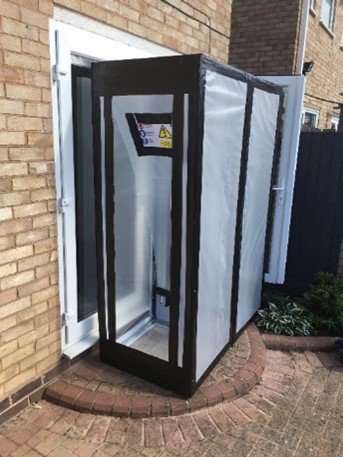
NPU
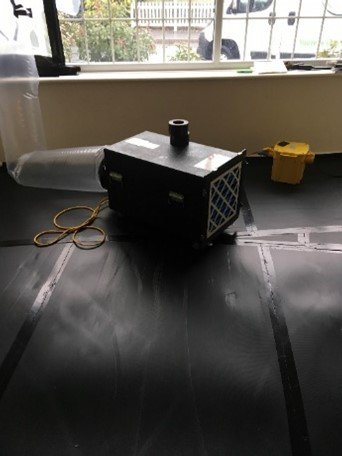
Asbestos Removal - Trained operatives wearing suitable RPE/PPE will enter the working area. When removing asbestos, we try to keep it intact, wet it and shadow vacuum it with H-type vacuum cleaners. The asbestos is placed carefully into clear printed asbestos sacs taken to the airlock and further bagged in a clear asbestos sac. It is then transferred to the waste holding area prior to removal from site.
Fine Clean – When all the asbestos has been removed all surfaces inside the enclosure are thoroughly cleaned to remove all visible dust and debris using H-type vacuum cleaners, sticky rags, and wet rags.
Post Works Assessment – The removal supervisor will carry out a visual assessment to ensure that all asbestos within the scope of works has been removed as far as is reasonably practicable (ASFARP).
Waste Disposal – All waste generated during the removal must be disposed of as hazardous waste. As part of the disposal process an Environment Agency Hazardous Waste Consignment Note will be generated so that the client knows where the waste was sent to for disposal.
Project Completion Report – Although not a legal requirement, at Safeline we will generate a report compiling all the documentation associated with your project.
This document contains:
Copy of our HSE asbestos removal license
Our insurance schedules
Method Statement and Risk Assessment
Project photographic record
Certificate of Reoccupation
Hazardous waste consignment note.
The below asbestos containing materials are deemed low risk as they do not readily release asbestos fibres when disturbed:
Removal of asbestos cement in good condition
Removal of asbestos containing vinyl floor tiles
Removal of asbestos containing bitumen felts/adhesives
Removal of installed asbestos plastics, resin and rubber products
Here at Safeline Environmental Ltd we know everything about
Asbestos and how to remove and dispose of it safely
When removing these ACM’s, the following is required under the Control of Asbestos Regulations:
Insurance - The company undertaking the work should have appropriate insurance specifically covering work with asbestos containing materials.
Training - The persons carrying out the work must be trained in non-licensed asbestos removal.
Method Statement - Produce a method statement and risk assessment detailing how the works will be completed.
Asbestos Removal - Trained operatives wearing suitable RPE/PPE will enter the working area. The asbestos containing material to be removed will be wetted with a low-pressure sprayer containing a surfactant solution. The asbestos containing material will be removed as intact as possible and placed into an asbestos waste disposal sac.
Fine Clean – When all the asbestos has been removed all surfaces inside the working area are thoroughly cleaned to remove all visible dust and debris using H-type vacuum cleaners, sticky rags, and wet rags.
Post Works Assessment – Although not a legal requirement for non-licensed asbestos removal Safeline carries out a documented post works assessment. The removal supervisor will carry out a visual assessment to ensure that all asbestos within the scope of works has been removed as far as is reasonably practicable (ASFARP).
Waste Disposal – All waste generated during the removal must be disposed of as hazardous waste. As part of the disposal process an Environment Agency Hazardous Waste Consignment Note will be generated so that the client knows where the waste was sent to for disposal.
Project Completion Report – Although not a legal requirement, at Safeline we will generate a report compiling all the documentation associated with your project.
